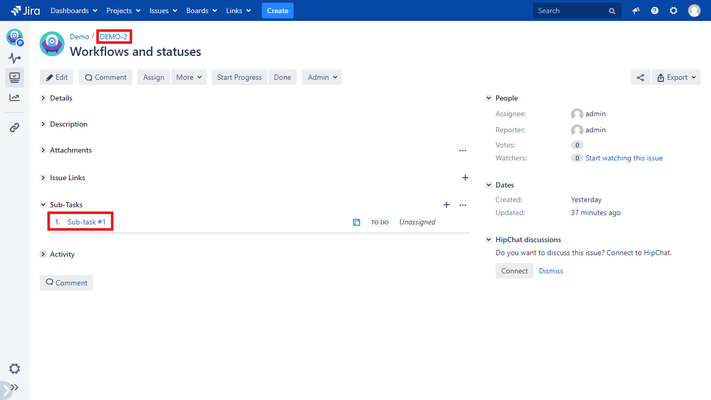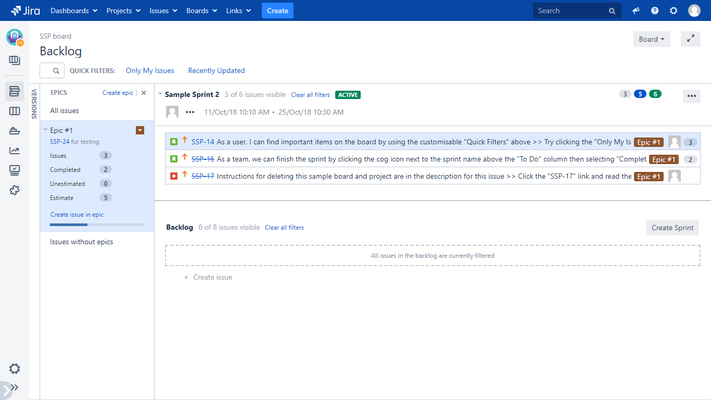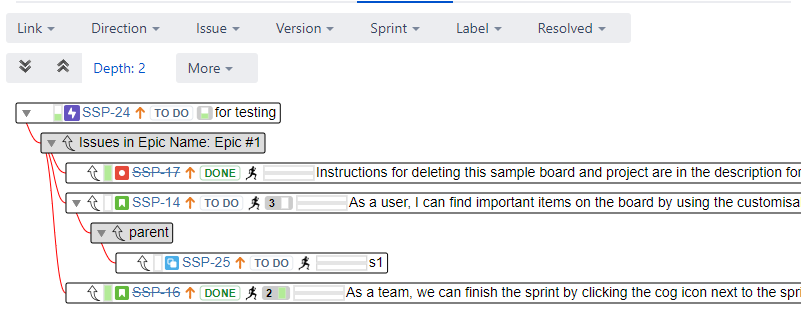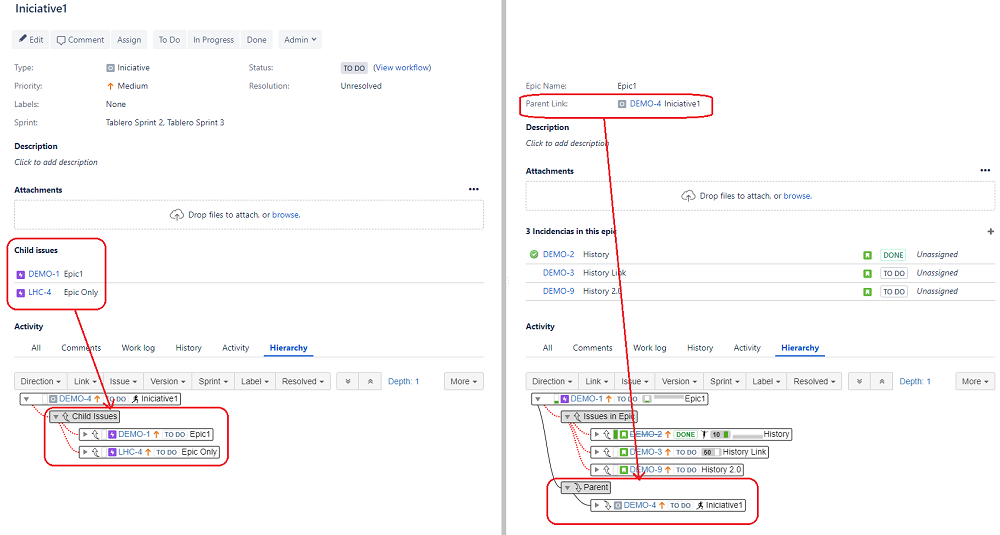Meta link types: Sub-tasks, Epics and Portfolio hierarchies
The Jira users intuitively expect a hierarchical visualization of other entities like Sub-tasks, Epics and Porfolio hierarchies. Strictly, they are not links. However, Links hierarchy converts them into "real" links as expected by the users.
This bring another interesting question: regular links have a direction attribute (inward/outward) defined in Jira, and the links has a different name for each direction. Therefore, what are the directions and names of meta links?
Sub-tasks
Example:
The DEMO-2 issue has the "Subtask #1" in Jira:
However, there is important information missing in this screen as sub-tasks are also issues, therefore they have a key attribute.
Sub-tasks become regular links in LInks hierarchy. They have a link direction and a link label for each direction.
source (subtask) → target
target (parent) ← source
as shown in the following pictures:
Note that the concept of the source and target are swapped in meta links. This was intentionally and carefully chosen, and we will explain why in next sections.
Epics
Epics hierarchies does not exist in Jira. Epics have issues and issues can belong to Epics. See how Epics and their issues are shown in Jira:
However, Links Hierarchy was the first Jira plugin drawing those Epic relationships as hierarchies of regular links:
Much more intuitive, no? ![]()
Furthermore, sub-tasks and regular links are also included in the hierarchy providing full context and consolidated views of issues.
Again, link directions and labels were defined for Epic meta links to simulate "real" regular links:
Epic ← (Issues in Epic Name: <Name>) Issue
Issue (Epic Link: <Name>) → Epic
Portfolio
Links Hierarchy supports Portfolio Hierarchy:
As opposite to Jira Software, Portfolio does not support any customization on its GUI to integrate third-party content. Therefore you cannot view issue hierarchies from any portfolio page. However, Links Hierarchy is a fantastic way to spread Portfolio hierarchies everywhere. Everybody can see them integrated with issue hierarchies wherever Liks HIerarchy is displayed: issue view and board detail view. So the users can see their issues within the Portfolio context and managers can see unexpected impacts (linked issues, etc.) on the Portfolio hierarchy progress.






